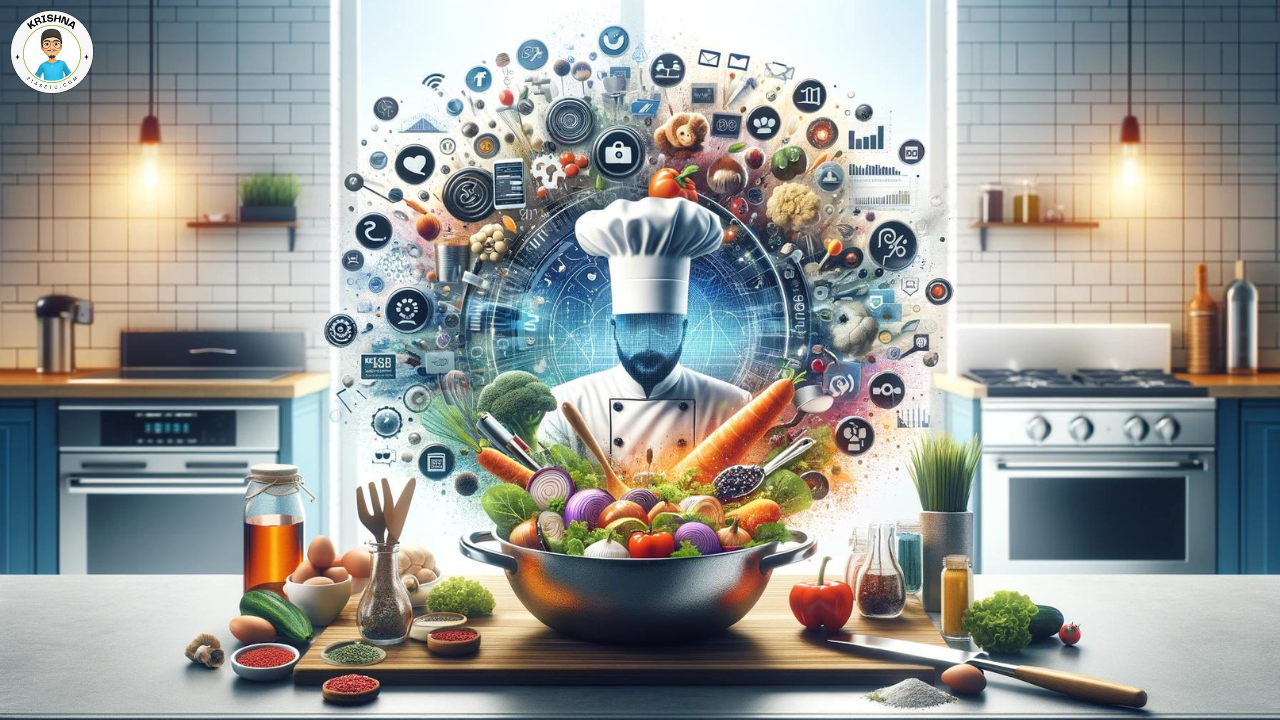
Digital Marketing Just like crafting a gourmet dish, creating a successful digital marketing strategy requires the right ingredients, precise measurements, and careful execution. In this article, we’ll walk you through the recipe for success in digital marketing, highlighting the key components and steps needed to cook the perfect marketing meal.
Preparing Your Ingredients for Perfect Digital Marketing Meal
Understanding Your Audience
To start, you need to know who you’re cooking for. Understanding your audience is essential.
- Market Research: Conduct thorough market research to understand your target audience’s preferences, behaviors, and pain points. Tools like surveys, focus groups, and data analytics can be invaluable here.
- Audience Segmentation: Divide your audience into segments based on demographics, interests, and behaviors to tailor your marketing efforts effectively. This ensures your messages are relevant and engaging.
Setting Clear Goals
Every great dish starts with a vision. Define what you want to achieve with your digital marketing efforts.
- SMART Goals: Define Specific, Measurable, Achievable, Relevant, and Time-bound goals for your marketing campaigns. Whether it’s increasing website traffic or boosting social media engagement, clarity is key.
- KPIs: Identify Key Performance Indicators to track the success of your campaigns and adjust strategies accordingly. These might include metrics like click-through rates, conversion rates, and return on investment (ROI).
The Base: Creating a Strong Strategy
Building a Solid Foundation
A strong base is crucial for any dish, just as a solid strategy is essential for successful marketing.
- Brand Positioning: Establish a clear brand identity and value proposition that sets you apart from competitors. This helps in creating a consistent message across all channels.
- Competitive Analysis: Analyze your competitors to identify strengths, weaknesses, opportunities, and threats. Understanding what works (and what doesn’t) in your industry can guide your strategy.
Content Strategy
Content is the main ingredient of your marketing meal. It needs to be rich and satisfying.
- Content Calendar: Plan and organize your content with a detailed calendar to ensure consistency and relevance. This helps in maintaining a steady flow of content.
- Content Types: Utilize a mix of content types, including blog posts, videos, infographics, and social media updates, to engage your audience. Different formats can appeal to different segments of your audience.
Seasoning: Adding the Right Channels
Social Media Marketing
The right seasoning can enhance the flavor of your dish. In digital marketing, the right channels can amplify your reach.
- Platform Selection: Choose the right social media platforms based on where your audience is most active. Facebook, Instagram, LinkedIn, Twitter – each has its unique strengths.
- Engagement Tactics: Use interactive content, live videos, and stories to engage your audience and build a community. Encourage user-generated content and conversations.
Email Marketing
Email marketing is a powerful spice that can add significant flavor to your strategy.
- Email Lists: Build and segment your email lists to send targeted and personalized messages. Personalization can significantly increase open and click-through rates.
- Campaign Automation: Utilize automation tools to streamline your email marketing campaigns and improve efficiency. Automated emails for welcome sequences, abandoned cart reminders, and follow-ups can save time and boost conversions.
Cooking: Executing Your Campaigns
Implementing Your Plan
Now it’s time to cook. Execute your well-laid plans with precision.
- Campaign Launch: Roll out your marketing campaigns according to your content calendar and strategic plan. Ensure all team members are aligned and resources are in place.
- Monitoring Progress: Continuously monitor the performance of your campaigns using analytics tools. Keep an eye on your KPIs and adjust your tactics as needed.
Optimization
No dish is perfect on the first try. Tweaking and optimizing can make a good meal great.
- A/B Testing: Conduct A/B tests to compare different versions of your content and identify what works best. This can apply to email subject lines, landing page designs, ad copies, and more.
- Adjustments: Make data-driven adjustments to your campaigns to enhance effectiveness and achieve better results. Regularly review your analytics to understand what’s working and what isn’t.
Tasting: Analyzing Results
Measuring Success
Taste your dish and see how well it turned out. Measure the success of your marketing campaigns.
- Performance Metrics: Evaluate your campaigns based on metrics such as engagement rates, conversion rates, and ROI. This will help you understand the impact of your efforts.
- Customer Feedback: Gather and analyze customer feedback to understand their satisfaction and areas for improvement. This can provide valuable insights into how your marketing is being received.
Reporting
Share your culinary success with your team and stakeholders.
- Comprehensive Reports: Create detailed reports that summarize your findings, insights, and recommendations. Use visuals like graphs and charts for clarity.
- Stakeholder Communication: Share your results with stakeholders to keep them informed and aligned with your marketing efforts. Regular updates can foster transparency and collaboration.
Garnishing: Enhancing and Refining
Continuous Improvement
A great chef never stops learning, and neither should you. Always look for ways to enhance your marketing strategy.
- Learning from Experience: Use past campaign data to refine your strategies and avoid repeating mistakes. Each campaign is a learning opportunity.
- Innovation: Stay updated with the latest digital marketing trends and incorporate innovative tactics into your strategy. This keeps your approach fresh and relevant.
Long-Term Planning
Plan for sustainable success, not just short-term wins.
- Sustainable Growth: Focus on building a sustainable marketing strategy that supports long-term business growth. Balance quick wins with strategic long-term goals.
- Scalability: Plan for scalability to ensure your marketing efforts can grow alongside your business. Prepare for future expansions and market changes.
Wrap-Up
Creating the perfect digital marketing meal requires careful planning, execution, and continuous improvement. By following this recipe for success, you can craft a strategy that not only meets your goals but also delights your audience and drives long-term growth.

